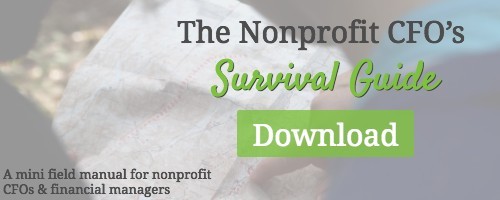You may feel like hanging on to your legacy financial management system is saving you money, when in reality, it’s costing you big time. Your outdated systems and manual processes are costing you productivity—and ultimately, time and money.
You may already know the secret to saving time and freeing up resources. Maybe it’s your board who does not agree. Change is hard to accept, especially when the budget is tight. And getting buy-in from a board isn’t always easy. But, keeping the status quo doesn’t always equate to doing the right thing.
Outdated accounting systems can actually be costing you productivity and accuracy. Productivity and accuracy equate to time and money. And chances are your board isn’t completely blind to the fact that spending money as an investment will make your nonprofit even more successful. Show them why a cloud-based financial management system is right for your nonprofit.
Your nonprofit board has a lot of responsibilities. They rely on frequent and adequate communication from your finance team to make the best decisions for your organization. You will need to get your board on board with having the right tools in place for proper fiscal management and sustainability
The first step is making your board aware of the problems you’re facing. How can they approve an investment in a financial management system when they have no idea anything is wrong with the current system?
Steps to get board approval for financial management software
Have the value prop ready
Be ready to present your value proposition to the board right off the bat. Show them how a new financial management system will add value to the nonprofit as a whole.
Start with your elevator pitch. Can you tell your board why you need this new software and how it will benefit the nonprofit in ten seconds or less? After you give the initial elevator pitch, you will need to present the big picture.
Identify the pain points the organization is feeling and the inadequacies of your current system that keep you from meeting your goals or performing your tasks in a productive and accurate manner. Next, explain how the software will address these problems and the positive outcomes you expect after adopting the new software. Provide a time-frame in which the board can expect to see positive ROI.
As you lay out the pain points you have now and the solutions new software can provide, you paint the picture of what financial management at your nonprofit can look like. And how it will help you reach your goals and achieve your mission.
Bring evidence
Be prepared to show the board how financial management software will make a difference for your organization. Use actual numbers from case studies, reviews, and other social proof. Don’t rely on edginess and buzzwords like “the cloud” alone to get buy-in.
Your job is to show them you’ve done your research and why it’s important not just to you but to the entire organization. Present it as a risk-free option, knowing that your board is likely risk averse.
Know your audience
When you were a kid and you wanted something, you probably went to the parent who was most likely to give you the answer you wanted to hear or at least shaped your question in a way that most likely gets you the thing you want.
While you don’t have a choice about which board you’re asking, you still have an opportunity to know whom you’re asking and how to communicate with them in a way they will understand. Your job is to help them understand the why.
Keep in mind that your board may not know as much as you do about the importance of certain features of the software. Don’t get too in the weeds with software features and lose their focus. Reserve the initial meeting for big picture solutions. If you do mention features at any point, give an explanation of how they help your agency reach your mission.
Anticipate their objections
Before they have a chance to give you all the reasons why it won’t work, show them why it will. If the objection is: we can’t afford it, show them how it will help your bottom line and where it fits into the budget. Provide case studies and documentation of other organizations who are reaping the benefits.
Give a cost breakdown
You may not want to open up the discussion by talking about price but you will need to discuss it at some point. It’s likely to be the first thing your board asks. Do your best to present the big picture solutions for your nonprofit first, before the board gets distracted by price. When you do get to the price discussion, give the board a breakdown of everything your team will get with the purchase of this software. Be sure to include any services like onboarding or support.
Show how it helps them, too
The nonprofit finance team is responsible for communicating reliable data to the board. How can they accomplish this with outdated systems and disparate data? Your financial reporting tools need to present the information in a manner that is useful for your board and for the board to present to their relevant audiences. Show the board how a new financial management system can achieve that. Make the time to show them sample dashboards that track the KPIs they are interested in.
A reliable nonprofit financial management system enables you to spend less time on painstaking tasks and focus on important strategic steps to help your nonprofit grow and be successful.
When you can paint a picture for your board of the difference a cloud-based financial management system can make in controlling budget, creating visibility, and measuring KPIs for growth, they will be on board with your request.
Looking for more resources to help with nonprofit financial management?
Get the Nonprofit CFO’s Survival Guide. This guide brings together insights from industry thought leaders to create a mini field manual for CFOs and financial managers at nonprofit organizations. Download your free guide now.


